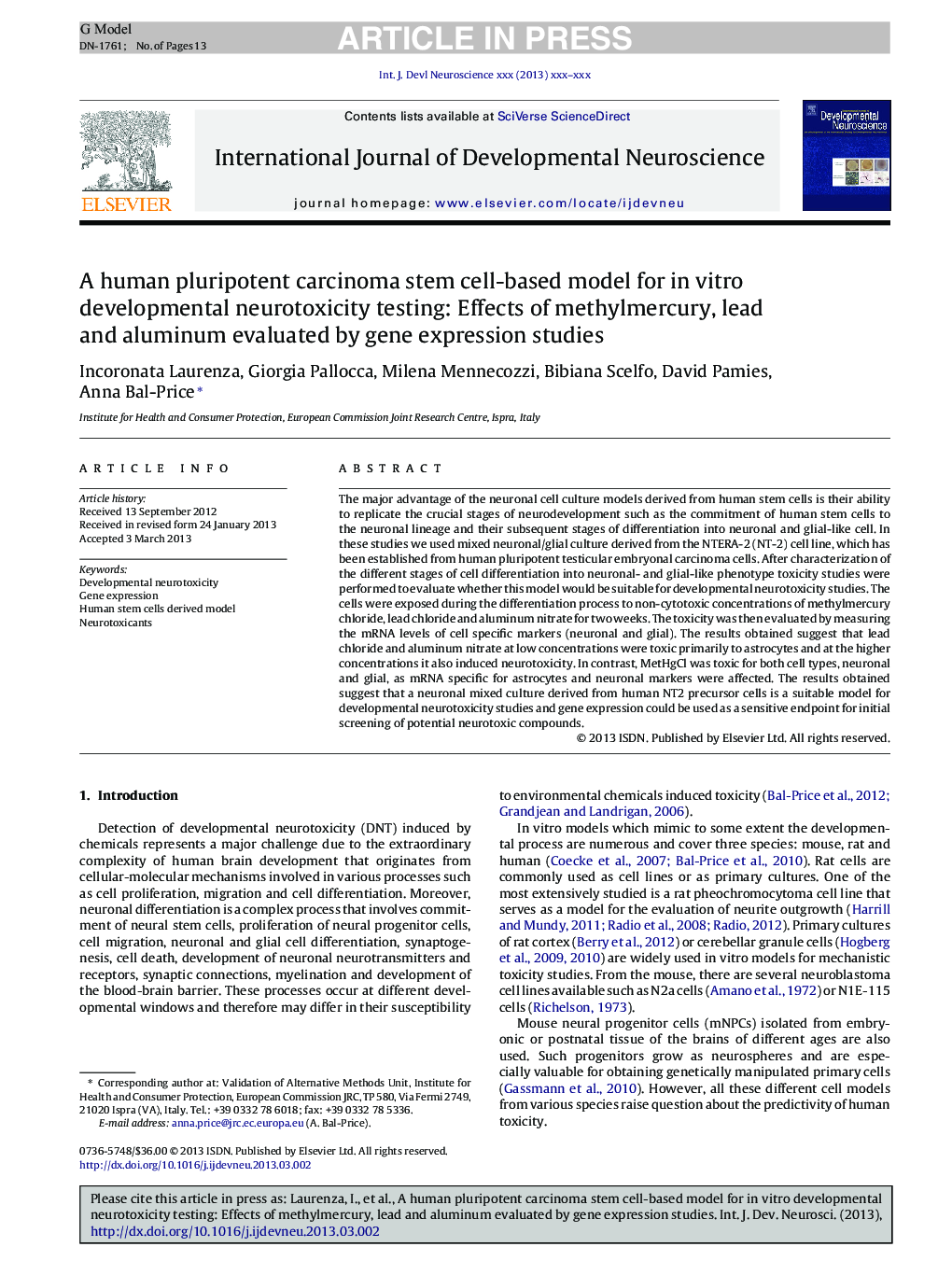| Article ID | Journal | Published Year | Pages | File Type |
|---|---|---|---|---|
| 5893955 | International Journal of Developmental Neuroscience | 2013 | 13 Pages |
Abstract
The major advantage of the neuronal cell culture models derived from human stem cells is their ability to replicate the crucial stages of neurodevelopment such as the commitment of human stem cells to the neuronal lineage and their subsequent stages of differentiation into neuronal and glial-like cell. In these studies we used mixed neuronal/glial culture derived from the NTERA-2 (NT-2) cell line, which has been established from human pluripotent testicular embryonal carcinoma cells. After characterization of the different stages of cell differentiation into neuronal- and glial-like phenotype toxicity studies were performed to evaluate whether this model would be suitable for developmental neurotoxicity studies. The cells were exposed during the differentiation process to non-cytotoxic concentrations of methylmercury chloride, lead chloride and aluminum nitrate for two weeks. The toxicity was then evaluated by measuring the mRNA levels of cell specific markers (neuronal and glial). The results obtained suggest that lead chloride and aluminum nitrate at low concentrations were toxic primarily to astrocytes and at the higher concentrations it also induced neurotoxicity. In contrast, MetHgCl was toxic for both cell types, neuronal and glial, as mRNA specific for astrocytes and neuronal markers were affected. The results obtained suggest that a neuronal mixed culture derived from human NT2 precursor cells is a suitable model for developmental neurotoxicity studies and gene expression could be used as a sensitive endpoint for initial screening of potential neurotoxic compounds.
Related Topics
Life Sciences
Biochemistry, Genetics and Molecular Biology
Developmental Biology
Authors
Incoronata Laurenza, Giorgia Pallocca, Milena Mennecozzi, Bibiana Scelfo, David Pamies, Anna Bal-Price,
